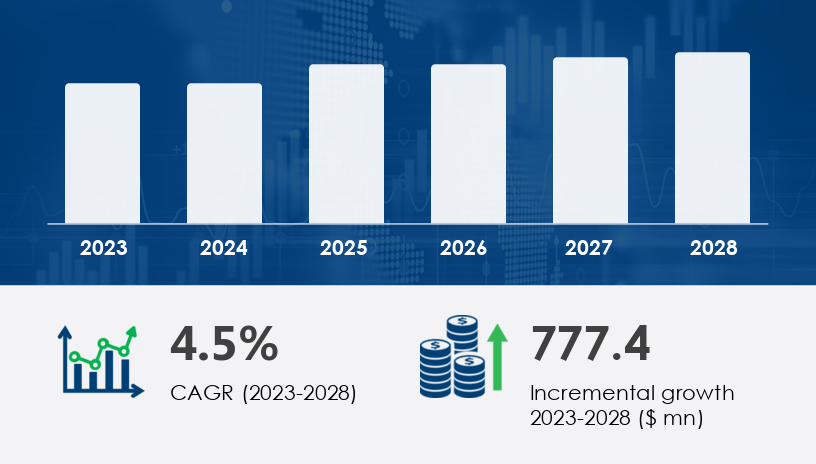The global neurovascular devices market is poised for significant growth, with projections indicating an increase of USD 777.4 million at a CAGR of 4.5% from 2023 to 2028. This comprehensive guide delves into the key drivers, technological advancements, regional dynamics, and strategic recommendations shaping the future of these medical devices.
For more details about the industry, get the PDF sample report for free

The Neurovascular Devices Market is expanding steadily, fueled by rising incidences of stroke treatment, cerebral aneurysm, and vascular malformation cases. Devices such as embolic coils, flow diverters, neurothrombectomy devices, and stent retrievers are pivotal in managing conditions like ischemic stroke, hemorrhagic stroke, and arteriovenous malformation. Innovations in aneurysm coiling, endovascular coiling, and flow diversion techniques have contributed significantly to improving outcomes in neurovascular intervention. For diagnostic precision and procedural success, tools like microcatheters, guidewires, balloon catheters, and catheter angiography are commonly employed in hospital treatment settings. The use of minimally invasive methods has surged, enhancing patient safety and enabling quicker recovery times. Moreover, carotid artery stents, intracranial stent, and stenting systems are increasingly utilized to manage intracranial stenosis and restore cerebral blood flow, thereby reducing the risk of aneurysm rupture and brain hemorrhage.
Neurovascular devices are integral in diagnosing and treating various cerebrovascular conditions, including acute ischemic stroke, cerebral aneurysms, arteriovenous malformations, and traumatic brain injuries. The increasing prevalence of these disorders, coupled with advancements in minimally invasive procedures, has heightened the demand for innovative neurovascular solutions.
| Metric | Value |
|---|---|
| Market Size (2024) | USD 3.74 billion |
| Projected Market Size (2028) | USD 4.52 billion 023–2028) |
| Leading Product Segment | Embolization Devices |
| Dominant Region | North America |
Request Your Free Report Sample – Uncover Key Trends & Opportunities Today
Technological Advancements: The shift towards minimally invasive procedures, such as endovascular coiling and neurothrombectomy, is revolutionizing treatment paradigms, offering reduced recovery times and improved patient outcomes.
Regulatory Support: Recent approvals by regulatory bodies like the FDA have facilitated the introduction of advanced neurovascular devices, expanding treatment options for patients.
Emerging Markets: Rapid urbanization and healthcare infrastructure improvements in regions like Asia-Pacific, South America, and the Middle East and Africa present untapped opportunities for market expansion.
The neurovascular devices market is expected to experience accelerated growth, driven by:
Aging Populations: Increasing life expectancy correlates with a higher incidence of neurovascular diseases, necessitating advanced treatment options.
Rising Healthcare Expenditures: Enhanced healthcare budgets enable the procurement of state-of-the-art medical devices, fostering market growth.
Innovative Product Developments: Continuous research and development efforts are leading to the introduction of next-generation neurovascular devices, enhancing treatment efficacy and safety.
Despite the positive outlook, several challenges may impact market growth:
High Treatment Costs: The expense associated with advanced neurovascular procedures may limit accessibility, particularly in low-resource settings.
Regulatory Hurdles: Stringent regulatory requirements can delay the introduction of new devices, affecting market dynamics.
Alternative Treatment Options: The availability of non-invasive treatment modalities may reduce the demand for certain neurovascular devices.
For stakeholders aiming to capitalize on market opportunities:
Invest in R&D: Focus on developing cost-effective and innovative neurovascular devices to cater to diverse patient needs.
Expand Global Presence: Establish a foothold in emerging markets through strategic partnerships and collaborations.
Enhance Patient Accessibility: Work with healthcare providers and policymakers to improve insurance coverage and reimbursement policies for neurovascular procedures.
See What’s Inside: Access a Free Sample of Our In-Depth Market Research Report.
North America is projected to contribute 38% to the global market growth during the forecast period. Factors such as advanced healthcare infrastructure, high healthcare expenditure, and a growing patient population drive this growth.
The Asia-Pacific region is experiencing rapid growth due to factors like increasing healthcare investments, rising awareness, and a large patient base. Countries like China and India are at the forefront of this expansion.
Europe remains a significant market, with countries like Denmark leading in the adoption of advanced neurovascular treatments. The region benefits from strong healthcare systems and supportive reimbursement policies.
Embolization Devices: Dominating the market, this segment includes embolic coils, flow diverters, and liquid embolic agents, crucial for treating conditions like cerebral aneurysms.
Revascularization Devices: Essential for restoring blood flow in occluded vessels, these devices are pivotal in stroke management.
Embolic Protection Devices: Designed to prevent embolic particles from causing distal embolization during procedures, ensuring patient safety.
North America: Leading the market with a significant share, driven by technological advancements and a robust healthcare system.
Europe: Exhibits steady growth, supported by well-established healthcare infrastructure and increasing adoption of neurovascular devices.
Asia-Pacific: Anticipated to witness the highest growth rate, fueled by improving healthcare facilities and a large patient population.
Get more details by ordering the complete report
Analytical insights into the neurovascular devices market reveal a growing emphasis on advanced procedures like clot retrieval, suction aspiration, and the application of liquid embolic agents in treating acute stroke and brain injury. These techniques, supported by cutting-edge embolization devices and revascularization devices, enhance precision and clinical efficacy. The growing use of fluoroscopy imaging and cerebral angiography provides real-time visualization during procedures, aiding in navigation through intracranial arteries. Conditions like hypertension treatment and blood clot management are also being addressed through evolving neurovascular therapy protocols. Devices such as distal filter systems support safe interventions by capturing debris during stenting systems procedures. Furthermore, coil embolization techniques have gained prominence for their role in preventing complications from aneurysm rupture. The adoption of advanced neurointerventional tools continues to reshape treatment approaches, enhancing clinical outcomes and establishing a new standard of care in neurology.
The neurovascular devices market is set for substantial growth, driven by technological innovations, supportive policies, and increasing healthcare demands. Stakeholders must remain agile, focusing on patient outcomes and strategic collaborations to capitalize on emerging opportunities.
Safe and Secure SSL Encrypted